Review: HTC One M9
Mar 22, 2015, 7:00 PM by Eric M. Zeman
updated Mar 24, 2015, 10:32 AM
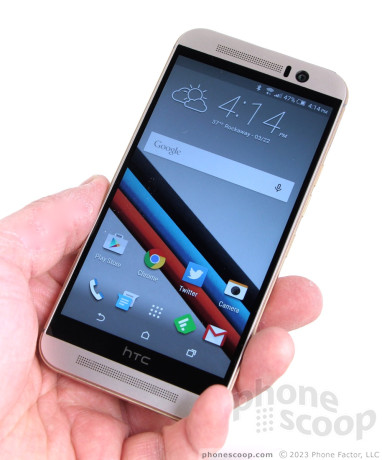
HTC's 2015 flagship is an evolutionary update to last year's model. While the new hardware is refined with better manufacturing and high-quality materials, not all the changes are for the better. HTC's Sense user interface is complimentary to Android 5.0 Lollipop and is a compelling alternative to stock Android. The M9 has a serious flaw, however, that we hope will be fixed.
Form
Is It Your Type?
The HTC One M9 is for flagship seekers. It's the pinnacle of design and technology from HTC, and competes directly with the likes of the Apple iPhone 6 and Samsung Galaxy S6. If you're an Android lover and want hardware that rivals the iPhone in terms of quality, the One M9 is the way to go.
Body
It's probably best to think of the One M9 as the iPhone 5s. The iPhone 5s carried over the iPhone 5's design almost exactly, but added new features. So does the M9 when compared to its predecessor, the M8. That means this year's phone from HTC is practically identical to last year's phone. I haven't decided if that's a good thing or a bad thing, yet.
The M9 is skinned in aluminum and glass. The metal has a two-tone finish, which is one of the few things that sets the M9 apart from the M8 visually. I can't say I'm a fan. The model we tested has a light champagne hue on the back and front surfaces, but the side of the phone is wrapped in a gaudy-looking gold band. The all-black version looks better, as the band doesn't stand out so much. The phone has the now-familiar BoomSound speaker grilles above and below the screen, as well as thin plastic bands that run across the back surface. These bands are purely functional; they serve the antenna design, just like similar bands on the iPhone. However HTC was able to incorporate them into the design in a tasteful way. The M9 is an elegant piece of hardware, to be sure.
The quality of the materials is quite good. I like the brushed aluminum back cover, which has just a bit more texture than last year's phone. It meets the side edges in precise corners. Together, these make the M9 less slippery. The phone is fitted together perfectly. It's a bit on the heavy side, but that's to be expected in an all-metal phone. Since the M9 has a 5-inch screen, it isn't monstrously huge. I found it easy to hold and use. For example, my thumb was able to reach the entire screen without requiring me to adjust my grip. The gentle curve of the rear surface helps it sit comfortably in your palm, but the band that circles the side edges has an annoying lip. The M9 slips into pockets with no problem.
When viewed from the front, the M9 is nearly indistinguishable from the M8. The glass screen fills the bulk of the front surface and is installed in the metal frame snugly. Bezels along the side edges of the display are practically nonexistent, but there are sizable bezels above and below to house the speakers, sensors, and user-facing camera. There are no physical buttons on the front at all; the phone uses Android's on-screen button bar.
The side edges are where all the action is. The lone element on the left side of the phone is the SIM card tray. It is positioned near the top edge and requires a paperclip or SIM tool to eject. The memory card tray is on the right side of the phone. HTC split the volume toggle into two buttons, which are below the memory card tray. These buttons have excellent travel and feedback. Thankfully, HTC moved the screen lock button from the top of the phone to the side. All three buttons have a nice texture, but the screen lock button has its own, circular texture that helps set it apart from the others. It also has a more noticeable profile.
You'll find both the microUSB port and headphone jack on the bottom of the phone. The top edge has a large black plastic strip that houses an IR port for controlling your home theater equipment.
HTC made dramatic changes to the camera, which is the one other element that helps the M9 stand apart visually from the M8. Where the M8 has two camera modules on the back, the M9 has a single, larger module that protrudes ever-so-slightly from the surface. It is a squarish shape, and is joined by HTC's two-tone flash. Like the M8 and M7, the M9 is sealed up tight. You cannot open it up or access the battery at all. This is a common tradeoff with metal-clad phones. Unlike its predecessors, the M9 is slightly resistant to water. You can't dunk it in the sink by any means, but it can handle some rain if you get caught in a storm.
While I would have preferred to see more differentiation with the hardware, the M9 is a solid bit of work from HTC. The phone has a classy look and exudes craftsmanship and professionalism. It is put together better than last year's model and offers all that is expected from today's flagship devices.
Performance
Screen
The One M9 maintains the same size and resolution of the M8's screen. It measures 5.0 inches across the diagonal and has full HD resolution (1920 x 1080 pixels). HTC prefers LCD panels and the M9's looks fantastic. It's colorful, pixel-dense, and bright. Viewing angles are superb. I do wish it were easier to use outdoors, though, as the glass panel covering the screen is easily gunked up with fingerprints. HTC is not matching the competition's recent jump to quad HD screens (2560 x 1440 pixels), but it doesn't need to. Full HD resolution is plenty sharp enough at 5.0 inches. I have absolutely no complaints about the M9's display.
Signal
We tested an unlocked European version of the One M9, so please keep in mind that our review unit isn't optimized for U.S. networks. We used it on AT&T's network in and around New York City. Without LTE support, our One M9 was limited to HSPA for data. That said, the phone performed very well. The device remained firmly attached to AT&T's network, even in the signal-scrambling urban canyons of Manhattan. The phone connected calls on the first dial every time, and never dropped or missed any calls. Data speeds via HSPA were understandably slower than what we'd expect from LTE, but still managed to do well enough for casual web browsing, email, and social networking. Bottom line: I was pleased the way the unoptimized version of the device worked, so I expect carrier versions to perform even better.
Sound
Despite the lack of optimization for AT&T's network, the M9 offered solid call quality. I was pleased with the clarity and tone of voices coming through the earpiece speaker. I didn't notice any interference while I tested the phone. More volume would have been nice. The earpiece generates just enough power to handle the regular spaces through which you might traverse (home, office, coffee shop, city streets, restaurant). It is easily swamped in really loud environments, however, like a bar or near construction. People I spoke to through the M9 said I sounded very good.
The BoomSound speakers are great for speakerphone calls. Both clarity and volume are excellent. You should be able to hear calls in most places. Thanks to the BoomSound speakers, ringers and alerts are incredibly loud. This phone will always get your attention.
The real reason the M9 has BoomSound speakers is, of course, for music and video playback. The high-quality speakers make the M9 an ideal entertainment companion. I found myself cranking up the music when working in my basement over the weekend. The stereo speakers are most effective when watching movies or TV shows. I enjoyed watching some NCAA basketball games on the phone while writing this review, and the sound quality was excellent.
Battery
Since our review model is a European variant, it does not support LTE in the U.S. Further, it isn't optimized for U.S. networks. Together, these can have a measurable impact on battery life. We plan to more fully evaluate the M9's battery once we have official versions from AT&T, Verizon, etc. That said, the unit we tested lasted consistently from breakfast to bedtime with some juice to space.
The M9 offers several power-saving tools to help maximize battery life. The Power Saver mode, for example, lets you conserve CPU usage, reduce screen brightness, turn off vibration, and put the data connection to sleep when the screen is off. This setting must be toggled on/off manually.
The Extreme Power Saver mode takes it a step further. With EPS turned on, the phone will automatically conserve power once the battery reaches 5%, 10%, or 20% left. It really ramps down what the phone can do and is meant as a last resort so you can make phone calls and send messages until you find power. Things like email, remote lock, and other basic Android functions are turned off completely. HTC claims Extreme Power Saver mode will provide for nearly a day of additional battery life.
Basics
Menus
The One M9 runs Android 5.0 Lollipop with Sense 7.0 on top. HTC's user interface overlay is more palatable to me than Samsung's TouchWiz, and can be overridden in favor of the Google Now home screen setup if you wish. HTC has left the basics of Sense in place while also tweaking and updating the design to fall more in line with Lollipop's attractive and modern Material Design. I like the fonts and general appearance Sense 7, and find it less intrusive than previous generations of the user interface.
I like HTC's lock screen treatment, which shows the clock and weather, notifications, and four shortcuts to select apps. The shortcuts mirror the four apps you've placed in the home screen dock. The lock screen shows notifications as they arrive, but also provides access to the notification shade as long as the phone isn't protected. You can protect the device with a pattern, PIN, or password if you want.
Lock Screen and Quick Settings
Just one home screen panel is active out of the box, but you can add a handful more if you wish. The panels are a good place for app shortcuts and widgets. As it has since the M7, HTC forcefully added its BlinkFeed social newsreader to the home screen panels, where it's positioned to the far left. BlinkFeed is a bit like Flipboard in that it combines your social networks with your preferred news sources to create an unending stream of "snackable" content. You can ignore it if you choose, but you can't turn it off nor uninstall it. (Although it does disappear if you ditch HTC's home screen (launcher) for another, such as the Google Now launcher.)
The main app menu offers a number of options that I appreciate. For example, you can view apps in alphabetical, custom, or most-used orders; you can hide and unhide apps; and you can change the grid size from a 3 x 4 arrangement to a 4 x 5 arrangement.
The notification panel serves two purposes: to let you access incoming notifications, and to provide access to the Quick Settings controls. A single swipe downward reveals actionable notifications and a second swipe down reveals the controls. HTC lets users customize the controls visible in the Quick Settings tool, which I appreciate. The panel holds up to 12 controls. You can decide which ones are visible and also choose the order in which they appear. Stock Android phones don't have that sort of flexibility.
Perhaps the most powerful aspect of Sense 7 is the extensive customization tools; they might leave your head spinning. As with all phones, you can change wallpapers, ringtones, alarms, and so on. Sense 7 allows people to pick the color of the phone dialer and the keyboard, manage home screen panels, and set behaviors for the Dot View case.
Moreover, the One M9 comes with nine pre-installed themes. Each theme has its own fonts, wallpapers, accent colors, and so on. There are many more themes available in a small storefront on the handset. The themes make extensive changes to the appearance of the home screen panels as well as apps such as messaging, phone, media player, clock, and Dot View case. The M9 also permits owners to adjust the themes to their own liking by changing the accent colors seen on menu screens and such. You can even use a favorite wallpaper photo as an automatic starting point for a your own theme with a matching palette of accent colors. It's a powerful set of customization tools.
HTC borrowed a feature from LG and made it possible to customize the Android nav buttons that appear at the bottom of the screen. The basics are back, home, and multitask, but you can add a fourth button if you wish and arrange them however you choose. Some of the extra choices include buttons that turn off the screen, open notifications, hide the nav bar, or open Quick Settings.
HTC was generous to include the Google Now launcher, which is the same one used by Google's Nexus-branded phones. It's a nod to some users' preference for a stock Android experience. If you switch to the Google Now launcher, the home screen panels and top-level menus all revert to stock Android. Google Now replaces BlinkFeed as the far left home screen panel. Some screens, such as the settings menu, remain unchanged.
The M9 is among the first devices to ship with a Snapdragon 810 processor. This is an octa-core, 64-bit beast paired with 3 GB of RAM. The phone was fast and fluid. It does tend to get a bit warm. During large app installs, for example, the device became very warm to the touch.
Calls and Contacts
The phone and contact apps are one and the same. They may have different icons in the app drawer, but they open the same app.
HTC tweaked the Android phone app to suit its own needs. The result is something less clunky than the Lollipop dialer, but still more complicated than it needs to be. The default view is the actual number pad along with the most recent call. There are five tabs stretched across the top of the app (history, phone, favorites, people, groups) and you scroll sideways to reach them. You can rearrange the tabs to your preferred order, and even remove some of them. Whether you dial from the number pad or the search bar, the calling features work smoothly.
The M9 syncs with myriad online contact sources, but defaults to your Gmail account. There's a drop-down menu at the top of the screen that lets you pick which phone books are visible. For example, my device showed phone books from the SIM card, my Google account, Twitter account, and Outlook account. I turned off the Twitter contacts to reduce the clutter in my phone book. If the phone sees duplicates, it will make suggestions on linking contacts together.
Together, the phone and contact apps work well.
Messaging
There's a pretty simple story to tell here. The phone has the Google Gmail and email apps, as well as Google+, Google Hangouts, Messages, and Google Messenger.
The newest version of Gmail — which is dripping with Google's Material Design — is quite good. Perhaps its best feature is support for multiple accounts. It negates the need for the separate, generic email application, although that's installed on the M9 anyway.
When it comes to sending text messages, you have three choices: Hangouts, Messages, or Messenger. As I've mentioned in other reviews, Hangouts handles SMS, MMS, and IM, but does so rather poorly. It works, but it isn't as easy as it should be. The Messages application is HTC's SMS app. It is functional and fits in well with HTC's Sense user interface. It's no problem to send messages and attach files, pictures, and other content to them. The Messenger application is Google's new SMS app for Android devices. Like Gmail, it relies on Material Design and is pleasing to the eye.
All three get the job done. Which you use boils down to personal preference.
Extras
Media
There are a healthy number of media apps on board, and you can expect to see more on carrier-branded versions of the M9.
First up are the standard Google Play apps, which work together with the Play Store for purchasing and consuming content such as music, movies, TV shows, books, and magazines. These apps have all been updated with Material Design in recent months and HTC didn't do anything to change them. The M9 has the stock YouTube app on board, too.
HTC stuck its own MP3 player on the M9, which is best used for sideloaded content or music stored on a memory card. This app works well and I like it. The Sense 7 design language is simple and elegant. This is one of the apps that will change appearance if you alter the theme. It's accompanied by an FM radio.
The Peel app (replaces HTC Sense TV) is a nice addition to the M9. Together with the IR port, you can access your cable provider's content guide, and you can control your TV, receiver, and cable box. It took me about 60 seconds to get the app up and running. It supports up to five rooms and multiple pieces of equipment per room. I like that it will offer push notifications when your favorite shows come on. You can even sync it with social media accounts.
Last, HTC added its HTC Connect tool to the M9, which makes it a snap to connect the phone to your TV, receiver, wireless speakers, and other A/V gear, via DLNA and other standard streaming protocols. The UI is dead-simple to learn and it works flawlessly.
Camera
The M9's camera app is almost a direct carry-over from the M8's camera app. HTC made a few tweaks here and there, but the basic appearance and functionality of the app are about the same. You can open the app from the lock screen, or by assigning one of the volume keys to open it with a long press. I prefer the latter. It opens quickly.
The basic viewfinder lumps most of the important controls along the right edge of the screen. These include separate shutter buttons for the camera and video camera, a button to switch between the different shooting modes, and access to the gallery. The camera has a control button for the flash in the upper-left corner, and a slide-out control strip is accessible from the bottom-left corner.
The M9 ships with three main shooting modes: normal, selfie, and panorama. These are self-explanatory. In addition to the dedicated camera mode switcher, you can jump between the modes quickly by swiping your finger up or down on the screen (rather similar to the iOS camera). You can download and install several other shooting modes, such as Bokeh Effect, if you want to. Like the M8, you can also create your own camera profile (custom settings) and save it as one of the top-level shooting modes.
The slide-out strip offers extensive control over the camera's settings, such as ISO, exposure, and white balance. You may also select from several different scenes, such as night, HDR, portrait, landscape, macro, and so on. When you choose any of these, a secondary control strip appears for making the selected adjustments. Last, there's a button to access the full settings menu, which lets you set aspect ratio, "make-up level" (software-controlled beautification), review duration, sounds, etc. This control strip works, but I wish HDR was pulled out and given its own icon in the viewfinder. It takes three taps to turn HDR on, which is two too many in my book.
The phone excels at point-and-shoot style photography. It's a breeze to pull the M9 out of your pocket, launch the camera, and easily capture what's around you. On the other hand, those who like more creative control have access to at least a smattering of extra features that are a few more finger taps away.
Photos
HTC (finally) got rid of the Ultrapixel sensor that adorned the M7 and M8 and equipped the M9 with a 20-megapixel Toshiba sensor. Even though it dramatically pumped up the number of pixels, HTC's image-processing still falls far short of the competition. Picture quality is all over the map. It goes to show you that megapixels aren't everything, not by a long shot. Daytime photos will turn out well, for the most part, but low-light imaging is practically useless. Sharp focus was inconsistent, as was exposure, and white balance. Darker images are rife with grain and noise. I thought a lot of photos also fell rather flat and felt lifeless. The M9 is certainly capable of capturing great images, but the ratio of good-to-bad is tipped way too far in the wrong direction.
The camera's mediocre performance tells me something is broken in HTC's camera department. This is the third flagship that has suffered from poor camera behavior at launch, which is simply inexcusable. Apple, LG, Microsoft, and Samsung all offer phones with far superior cameras. Given HTC's strong focus (pun intended) on providing a quality imaging experience, its failure here leaves me rather dumbstruck.
The selfie camera uses the Ultrapixel sensor and has 4 megapixels. It features a wide-angle lens and can squeeze quite a bit into the frame. It is far more consistent than the main camera and did much better it low-light situations.
Video
The One M9 records video up to 4K (Ultra HD) resolution. You'll be best served by sticking to regular old 1080p resolution for most of your video-capturing needs. The video camera does a better job than the camera at capturing accurate exposure, focus, and white balance. It struggles in dark settings, but most video cameras do. You can get away with using the M9 for capturing those everyday moments that demand to be recorded, but I'd use dedicated video equipment for important events.
Gallery
There are a handful of ways to manage photos on the M9. Google's Photos app is present and accounted for. It may be the best option if you value automatic backups of all your shots to Google's servers, and it offers a decent set of editing features, too.
HTC's own gallery app has been updated for Sense 7 and is easier to use than previous generations. I like how it handles photos, which can be viewed in a wide variety of ways (timeline, grid, events, year). You can sort photos via date, location, and tags, and the gallery keeps screenshots and downloads in their own spot. The editing functions are crazy.
The photo editor presents four options at the bottom of the screen: delete, Zoe, themes, and Fx Editor. The Zoe tool — which also exists on the phone as a stand-alone app — lets you create multimedia clips manually or automatically. The Themes tool is really just an incredible set of filters (think Instagram). The Fx Editor is where you'll find all the real fun stuff. It handles the basics, such as crop, rotate, and red-eye reduction, but also offers frames, and a variety of effects. The effects veer into the artistic with double exposures, odd shapes, and prismatic arrangements. You can even merge two different faces. The Fx Editor is more fun than functional, but a little fun never hurts.
Bluetooth
Like most of this year's flagship phones, the M9 includes Bluetooth 4.1 and support for advanced profiles like aptX. The device paired easily with headphones, computers, speakers, and smartwatches. Phone calls sent to my car's hands-free system were loud and clear. The M9 offers high-quality, high-volume music playback thanks to the BoomSound speakers, but if you want something with a bit more juice, you can pair it with a Bluetooth speaker. Thanks to the aptX profile, the M9 sounded fantastic through my favorite portable speaker. The M9 doesn't have any Bluetooth performance problems.
Browser
The M9 includes Google's Chrome browser, and that's fine with me. The browser worked perfectly, even with just 3G data. The fast processor, pretty screen, and quick wireless radios combined to produce flawless mobile browsing. Web sites loaded in a blink, even under poor coverage conditions. Chrome itself is a fine browser in that it syncs bookmarks and open tabs with your desktop version of Chrome, and offers advanced tools such as private browsing.
Clock
HTC has always done a good job with the clock and the M9 is no different in that respect. The lock screen always offers the time in a white digital clock at the top, no matter the theme or wallpaper. Some of the themes have thicker fonts that are easier to read, but they're all legible from an arm's length away. I do wish the clock were easier to see when outdoors.
GPS
Google Maps is all you'll ever really need to get around town and it runs really well on the M9. The M9 renders maps quickly and accurately thanks to the good GPS radio on board. I'd say accuracy was as good as 10 feet at times, but never worse than about 50 feet. I was pleased with the phone's ability to route me from home to a parking garage in TriBeCa and avoid some nasty construction along the way. The M9 is an excellent navigation tool.
HTC Apps
HTC has a number of small, helpful apps aboard the M9 that are worth discussing in brief. For example, there's an HTC's Setup app, which will walk you through the process of setting up the phone for the first time. It works hand-in-hand with HTC's Backup app, which lets you backup the contents of your device and restore your device from those backups.
There's an app called HTC Club that provides "insider" information about all things HTC. For example, it pulls down content from HTC's official blogs and HTC's official marketing outlets.
The Dot View case gets its own app, which lets people select from different themes and display styles if they have a Dot View case. HTC also gave the One M9 a "Kids Mode" that locks down certain functions and prevents kids from messing up the device. Most of these apps are simple and straight-forward to use. I didn't hit any roadblocks when testing them out.
Wrap-Up
HTC has crafted a fine phone in the One M9, but it's not without significant shortcomings. The classy industrial design and leading-edge specs are impressive, no doubt. A single flaw, however, might sink the entire ship.
HTC refined last year's phone to make a more precisely-engineered piece of hardware. The M9 is made from top-grade materials and fitted together in impressive fashion. I'm not sold on the band that circles the outer edge of the phone, however, and wish HTC had differentiated the M9's design more. The phone has a great screen, and the cellular radio performed well on AT&T's network despite the lack of LTE and proper optimization. The BoomSound speakers sound great for both music and phone calls, and battery life is just about good enough for this class of device.
HTC's Sense 7 user interface mostly compliments Android 5.0 Lollipop, and it offers far more customization options than most other handsets on the market today. The phone is packed with media options, and the Peel app, with its remote control, is a nice tool to have in hand.
Sadly, the camera isn't up to par, at least not yet. (HTC hasn't said if it intends to tweak the camera further — we can only hope that it will.) Though HTC improved the sensor compared to the M7 and M8, it simply doesn't perform well enough with the current software. If imaging is important to you, stick to HTC's competitors.
Companies that only make one flagship smartphone per year can't afford to make mistakes. HTC is in a precarious position with the One M9. Flagships have to fire on all cylinders. While most aspects of the M9 are commendable, the poor camera seriously hinders this phone's chances in the market. For that reason alone, I am reluctant to recommend the M9 to anyone.
Comments
Number One Reason for Quad-HD
The actual image captured is more dense and stands up to image expansion on larger monitors and of course Quad HD devices. Now you have a reason to desire the new standard. 😁
Very disappointing
(continues)


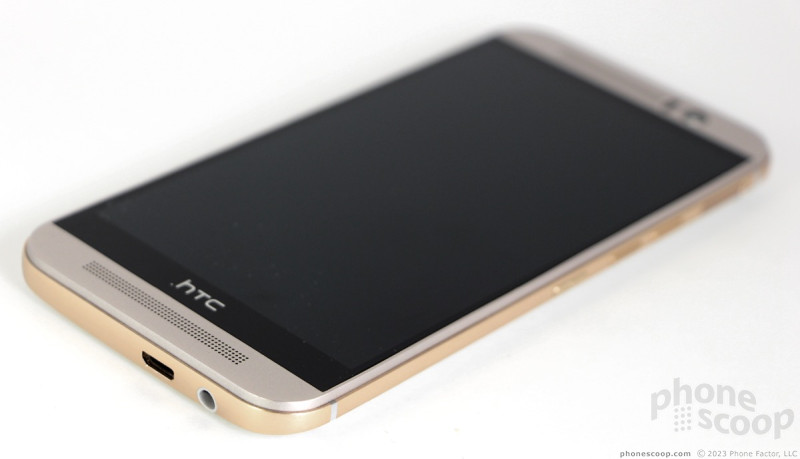





















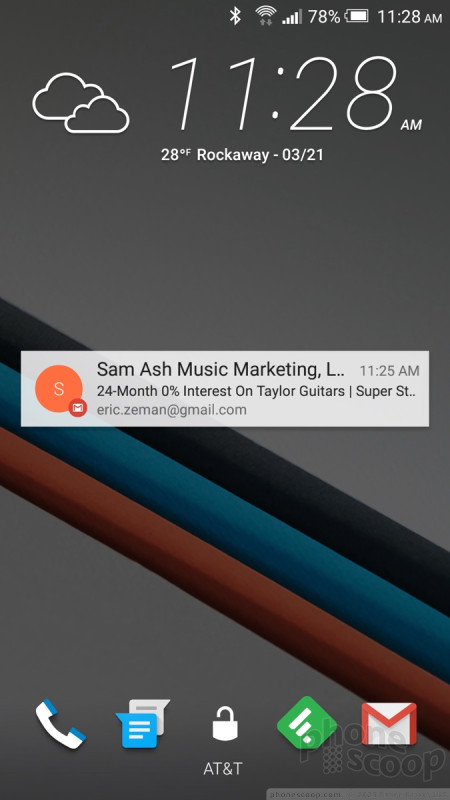





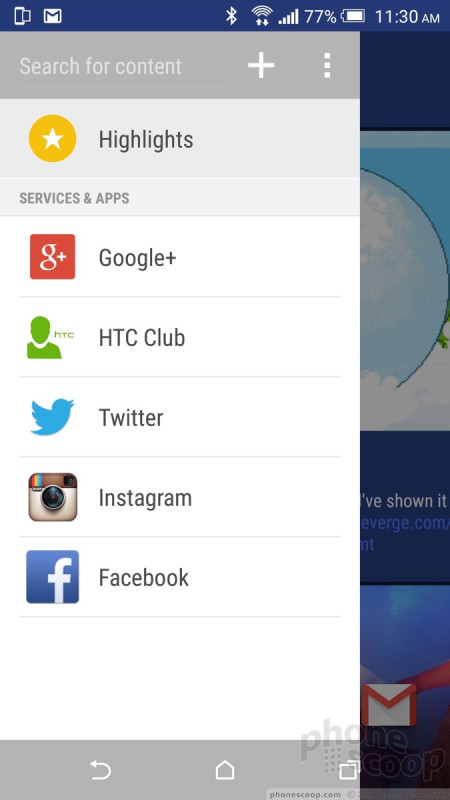




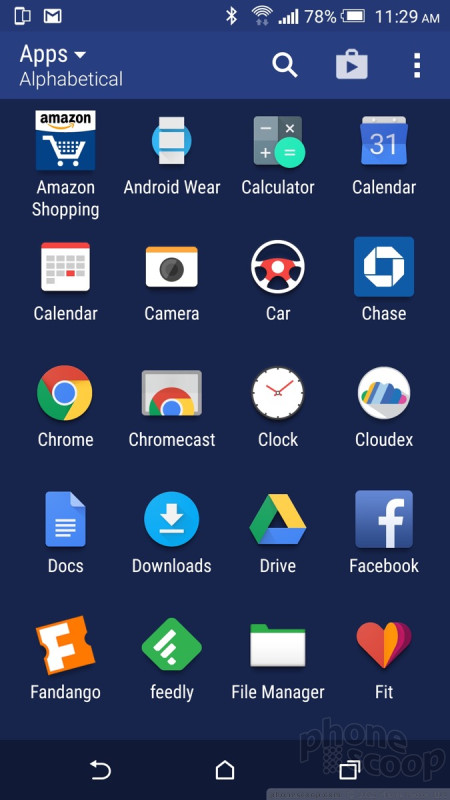




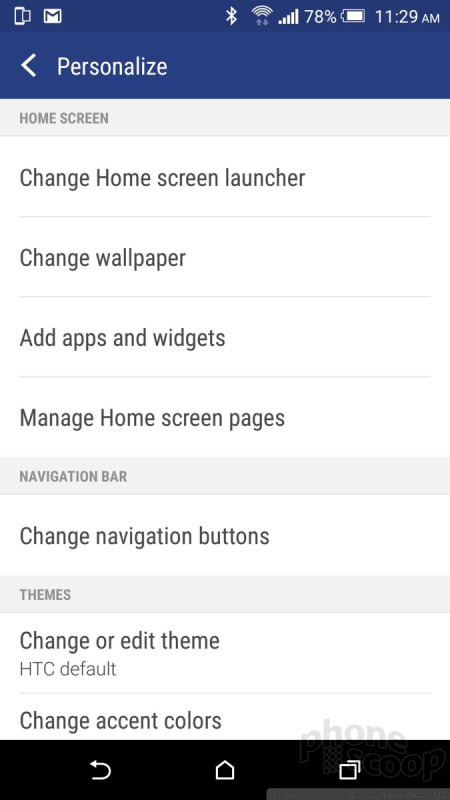





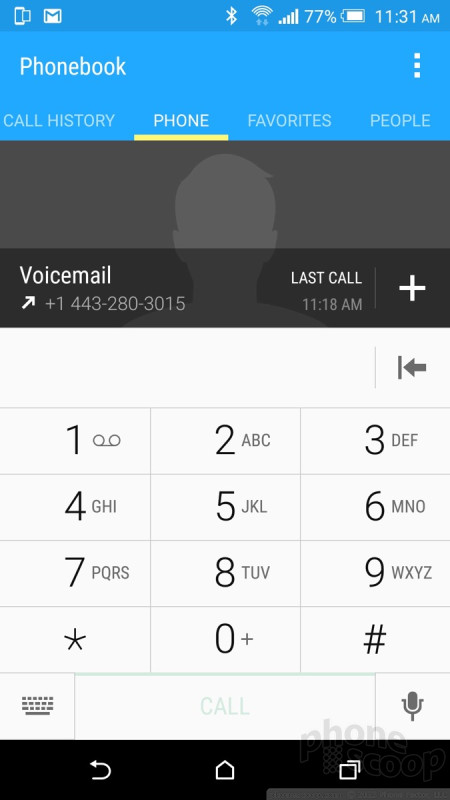



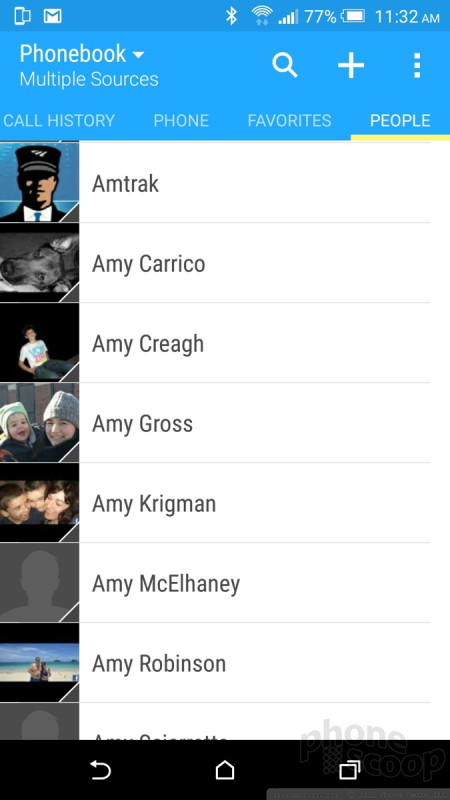



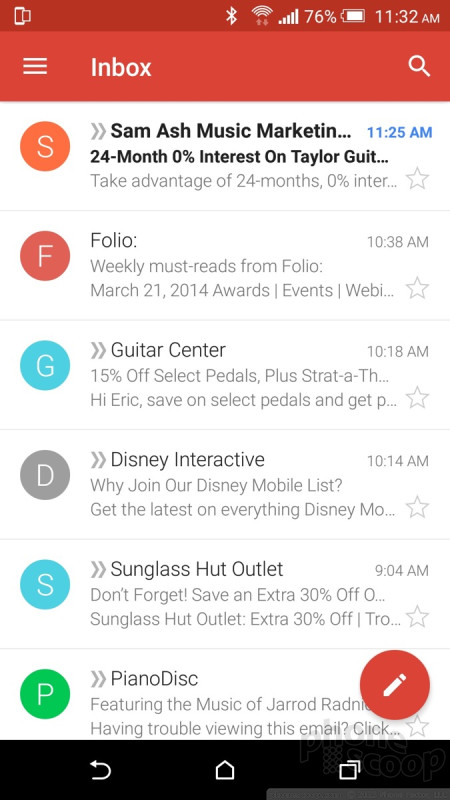



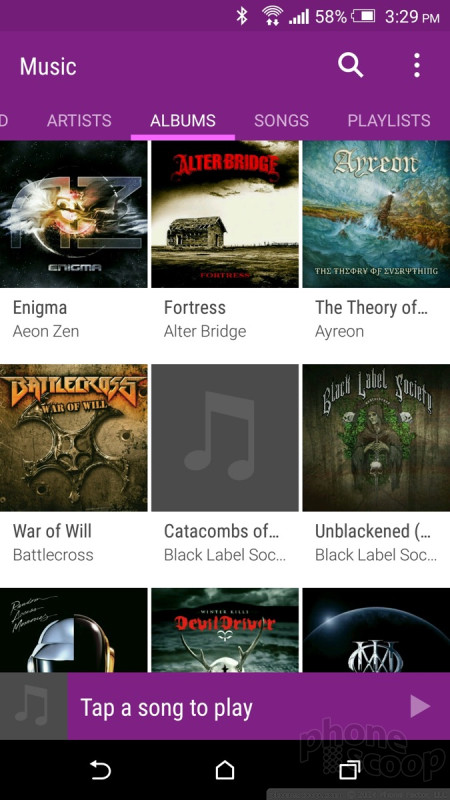




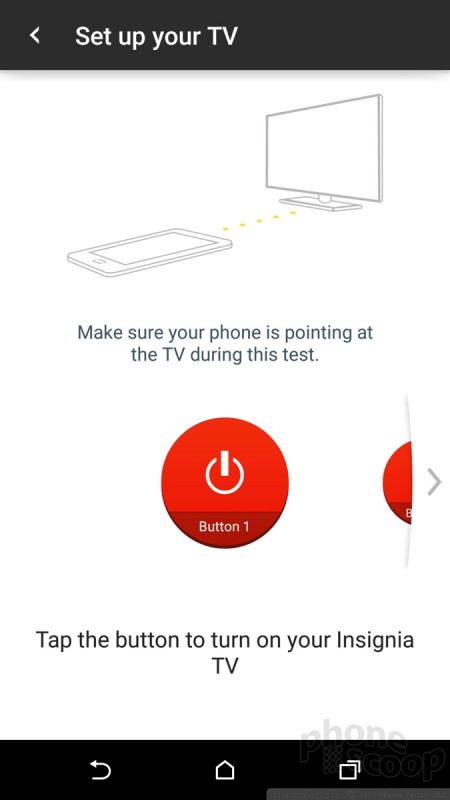






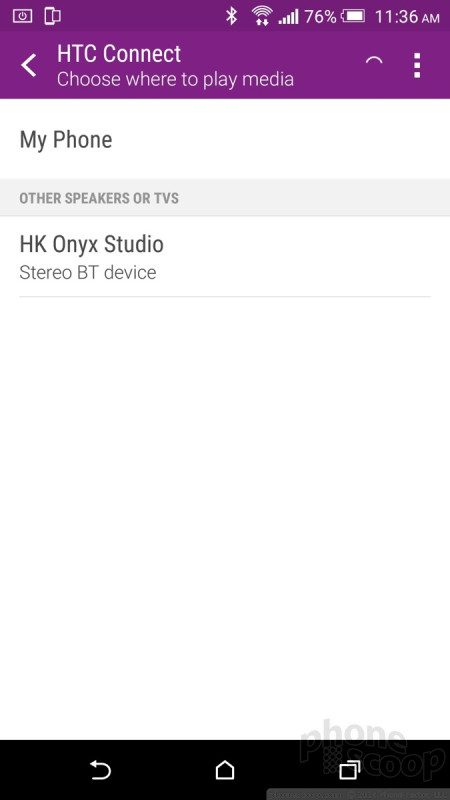



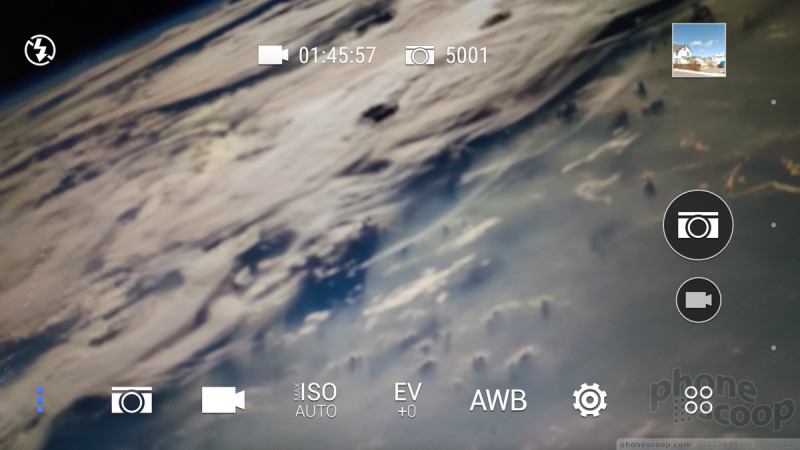
































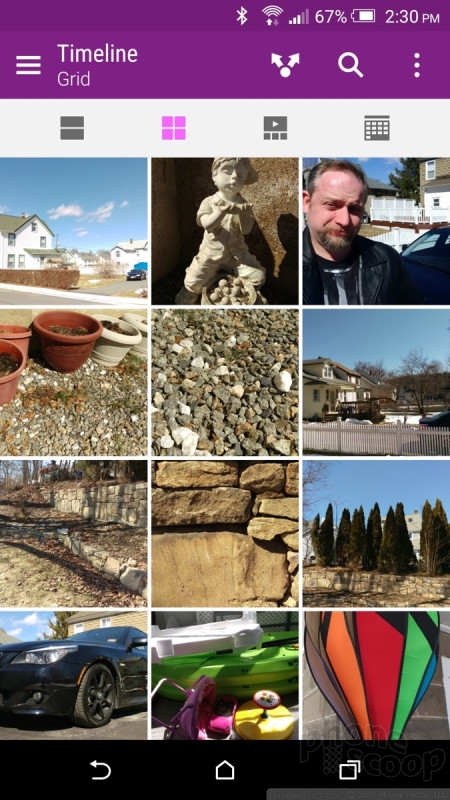














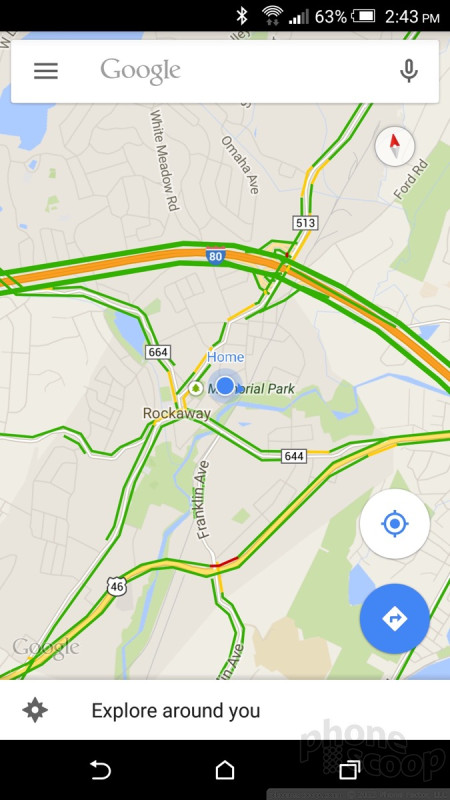



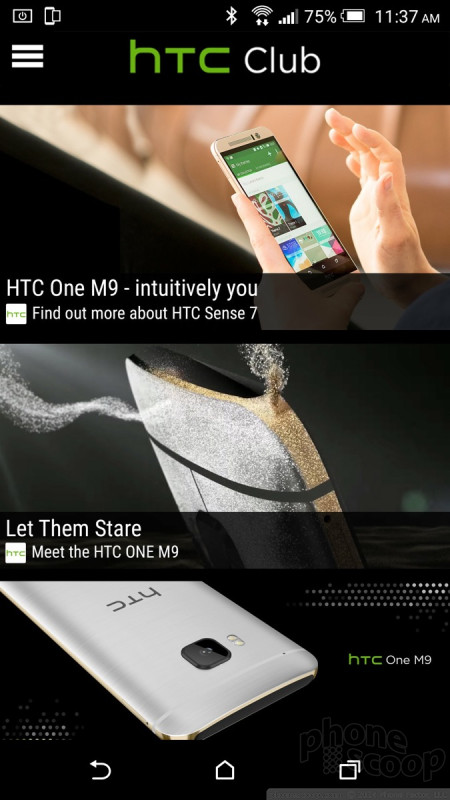






 HTC Updates Lock Screen and Sense Home Apps
HTC Updates Lock Screen and Sense Home Apps
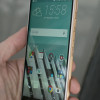 Hands On with the HTC One M9
Hands On with the HTC One M9
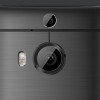 HTC Bringing the One M9+ to Europe
HTC Bringing the One M9+ to Europe
 HTC's One M9 Earns RAW Support Via Camera Update
HTC's One M9 Earns RAW Support Via Camera Update
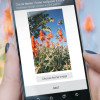 HTC to Sell One M9 March 27 for $649, Carriers April 10
HTC to Sell One M9 March 27 for $649, Carriers April 10
 HTC One M9 (CDMA)
HTC One M9 (CDMA)
 HTC One M9 (GSM)
HTC One M9 (GSM)



